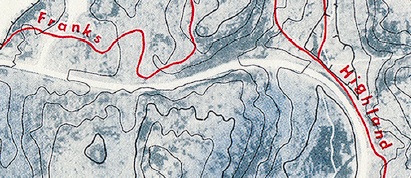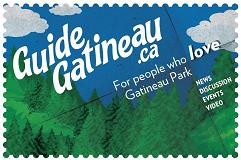 On January 19th the NCC hosted what it called Consultation Meeting for Walkers Using Trails of Eardley Escarpment and Integral Conservation Zone of Gatineau Park. This meeting had been put off from November 3rd.
On January 19th the NCC hosted what it called Consultation Meeting for Walkers Using Trails of Eardley Escarpment and Integral Conservation Zone of Gatineau Park. This meeting had been put off from November 3rd.
I did not attend but am told that there were more than 30 people in attendance representing virtually all of the region’s hiking and walking clubs.
The meeting follows from the Gatineau Park Ecosystem Conservation Plan which discusses the use of unofficial trails. This was an exploratory meeting and discussed the reasons that park users are drawn to the back country as well as some of the challenges this poses for Park managers. It seemed that on the part of the NCC there was a desire to better understand this user group and build relationships with the clubs.
At the same time there was caution on the part of at least some of the representatives who feared that the Conservation Plan was possibly moving the NCC toward establishing exclusion zones for “unofficial trail” use. The evidence of this has been on the ground in the form of trenches dug to inhibit access and banners in the woods beseeching users to return to the official trails. Some assurances were given at the meeting that exclusion zones were not planned.
More meetings are planned but no date or future agenda has been set.


 The cards that GuideGatineau has begun distributing to promote the website are considered to be highly environmentally responsible due to the fact that the paper used is 100% recycled and is produced using energy from biofuels plus the ink is vegetable based.
The cards that GuideGatineau has begun distributing to promote the website are considered to be highly environmentally responsible due to the fact that the paper used is 100% recycled and is produced using energy from biofuels plus the ink is vegetable based.
Any idea if these meetings are public?
Yes-n-no. The NCC wants to talk to representatives of groups of users. That can sometimes include individual users but real dialogue gets difficult when groups get large and there are already more than 30 people attending.
My experience as a regular Eardley Escarpment unofficial trail and off-trail user is that the vast majority of use is not by organized, identifiable, named groups but rather by small informal groups (that is, a few friends out walking together). This majority of users does not have representatives, and the significant flaw in the current consultation model is that they will not be heard from.
I see a few issues with organized group use of the unofficial trails, some of which have management and conservation implications.
Organized groups are generally, or at least potentially, larger than informal groups. (I presume, I’m not sure that I’ve ever run into one on those trails.) When walking, larger groups are more likely to spread out beyond single file, and cannot avoid covering a bigger patch of ground when stopped. These two things expand their impact over that of the same number of people in ones, twos, and threes. Organized groups introduce new users to the trails, but being a member of a larger group means that these users will be less attuned to the route, to cross trails and to the general complexities of navigating the unofficial network. Inexperienced walkers introduced to the trails via an organized hike are hence more likely to get into trouble on subsequent non-organized trips to the area, compared with users who have ‘discovered’ the network through their own explorations. Lost persons and rescues in that area are, I’m sure, a management concern.
On the plus side, organized groups can include experts on the natural and historic values of the area and can enhance the appreciation of the participants and inform them of conservation concerns.